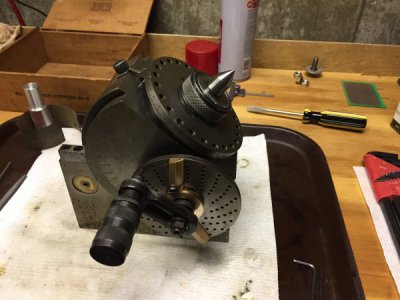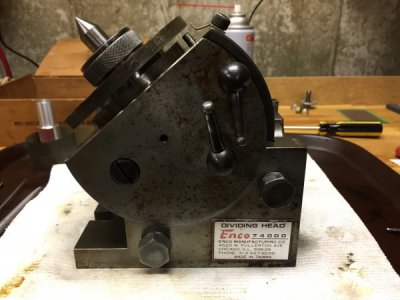- Joined
- Feb 28, 2019
- Messages
- 508
I acquired a dividing head in need of a little TLC. One of the things I'd like to replace are the brass bushings that clamp the body by pinching on the dovetails on the head. I could post pictures, but basically they are round plugs about 3/4" dia and 1/2 thick with a dovetail cut tangentially across one of the faces. A bolt is use to force them into the dove tails on the body of the head, locking the head angle relative to the base.
I figured it would be easy. However I just took a measurement of the dovetail angle and it appears to be ~75 deg or higher. Definitely way more than 60.
A quick look through a few online catalogs and cutters seem to come in 45 and 60.
Having never cut a dovetail before, I'm not sure if I'm looking for a cutter with an odd angle or if I'm missing some trick. For instance, I could see using a 60 deg cutter and adding the difference to piece when I clamp it. However that seems a little awkward to me.
How is this normally done? Do I just need to buy a less common higher angle dovetail?
-Dave
I figured it would be easy. However I just took a measurement of the dovetail angle and it appears to be ~75 deg or higher. Definitely way more than 60.
A quick look through a few online catalogs and cutters seem to come in 45 and 60.
Having never cut a dovetail before, I'm not sure if I'm looking for a cutter with an odd angle or if I'm missing some trick. For instance, I could see using a 60 deg cutter and adding the difference to piece when I clamp it. However that seems a little awkward to me.
How is this normally done? Do I just need to buy a less common higher angle dovetail?
-Dave



